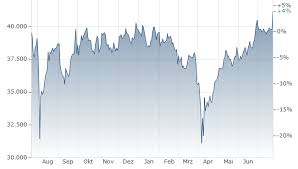Nikkei 225: A Vital Indicator of Japan’s Economic Health

Introduction
The Nikkei 225, often referred to simply as the Nikkei, is one of Japan’s most closely watched stock market indices. Comprising 225 of the largest publicly traded companies on the Tokyo Stock Exchange, the Nikkei serves as a crucial gauge of the health of the Japanese economy and its stock market. With Japan being the third-largest economy in the world, fluctuations in the Nikkei can significantly influence global financial markets, making it a topic of keen interest to investors and analysts alike.
Recent Trends and Performances
As of October 2023, the Nikkei 225 has shown remarkable resilience amidst global economic challenges. After a steady climb earlier this year, fueled by optimistic corporate earnings reports and a rebound in consumer spending, the index reached its highest levels in over 30 years. Factors contributing to this growth include a weaker yen, which enhances the competitiveness of Japanese exports, and robust demand in sectors such as technology and manufacturing.
In recent weeks, the index faced some volatility due to global inflation concerns and changes in interest rate policies from central banks. Despite these challenges, analysts remain optimistic about Japan’s economic recovery, expecting the Nikkei to remain a focal point for both domestic and foreign investors. The index’s performance often reflects investor sentiment regarding economic stability and growth prospects in Japan.
Impact on Global Markets
The influence of the Nikkei 225 extends beyond Japan’s borders. Investors worldwide watch the index to gauge market sentiment and economic trends in Asia. A rising Nikkei is often interpreted as a sign of confidence in the Japanese economy, encouraging investments in other markets in the region. Conversely, a downturn in the Nikkei can lead to cautious sentiment, impacting trading on international exchanges.
Conclusion
In conclusion, the Nikkei 225 remains a vital indicator of not only Japan’s economic health but also of global market conditions. As we move toward the end of 2023 and into 2024, the index’s performance will likely continue to reflect broader economic trends, influenced by both domestic developments and international economic factors. Investors and market watchers should keep a close eye on the Nikkei, as it provides valuable insights into potential shifts in economic momentum, both in Japan and worldwide.









